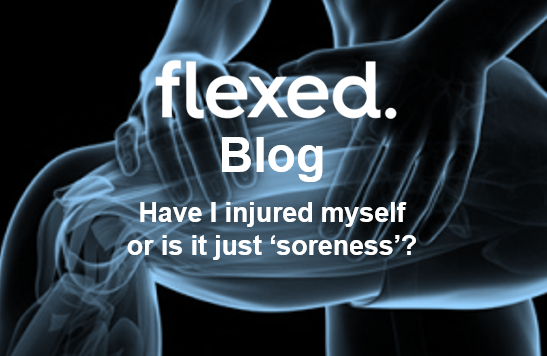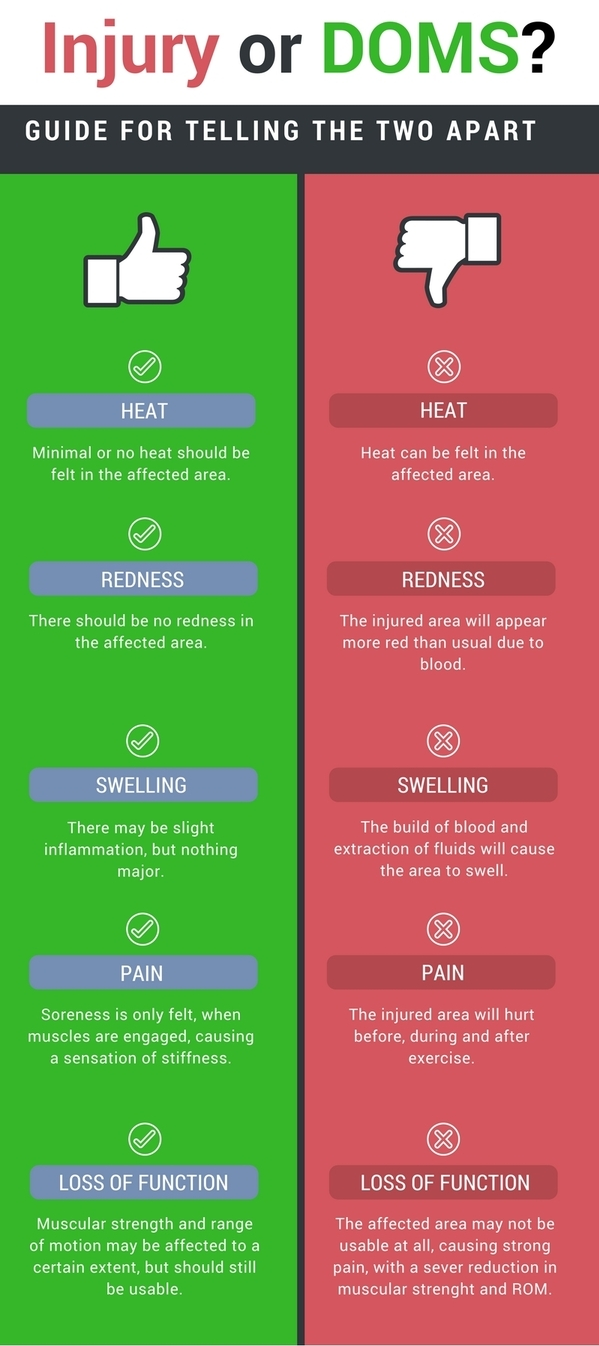Have I injured myself or is it just ‘soreness’?

So, you just trained at the gym, played a game of sport or been for a run…it’s the next day and you are trying to figure out if you just have post exercises soreness or if you have actually injured yourself. How do you differentiate between the two? And what do you do?
Delayed Onset Muscle Soreness (DOMS):
Post exercise soreness is generally referred to as DOMS which stands for delayed onset muscle soreness. Everyone would have experienced this at some point whether you’re the weekend warrior, professional athlete, fitness enthusiast or the person who decided to walk/run instead of drive to work one day. DOMS are most common following an unaccustomed exercise (more intense exercise, longer duration, different type of exercise).
Usually this type of pain comes on a day or two after exercise and it usually effects one whole muscle or a group of muscles – rather than a specific point. Muscles can become sore to touch and moving or stretching can be painful and difficult. Even standing up from a chair can become difficult if the DOMS are in your legs. This normally happens approximately 24hrs after exercise with symptoms usually peaking around 72hrs after exercise and can take up to a week to resolve.
What do I do if I get DOMS?
DOMS is not comfortable (especially around days 2-3) but it is also not harmful to train through it so you can get back into light exercise before the pain has settled completely. Light exercise, gentle stretching and massage is the best way to facilitate recovery. During the DOMS phase, your muscles can be slightly weaker than usual and intense exercise may increase the risk of sprains/strains to the area so ensure exercise is kept light. As your body adapts and gets stronger, the intensity of DOMS will decrease.
Injuries:
There are a few things that need to be taken into consideration when it comes to an actual injury:
Has there been a mechanism of injury?
- Was there a particular point where you can definitely say that was the time of injury doing a specific movement?
Overloading
- Has there been a sudden increase or change in your training?
- Has there been a continuously high training load?
Is there a particular spot that is sore?
- If an injury is present there is generally a spot in the muscle or joint that is sore rather than an entire muscle or limb. This may also be accompanied by weakness and loss of function.
Are there any cardinal signs?
- Redness
- Heat
- Swelling
- Bruising
These are usually signs of injury.
Final point, there are differential diagnoses to consider (eg. Stress reactions, muscle tears, tendinopathies etc). If your symptoms are not starting to subside following the 3rd day of DOMS or if you believe there has been an injury, contact us at Flexed and we can assist you with the right advice and treatment to return to your peak.
Physiotherapist


